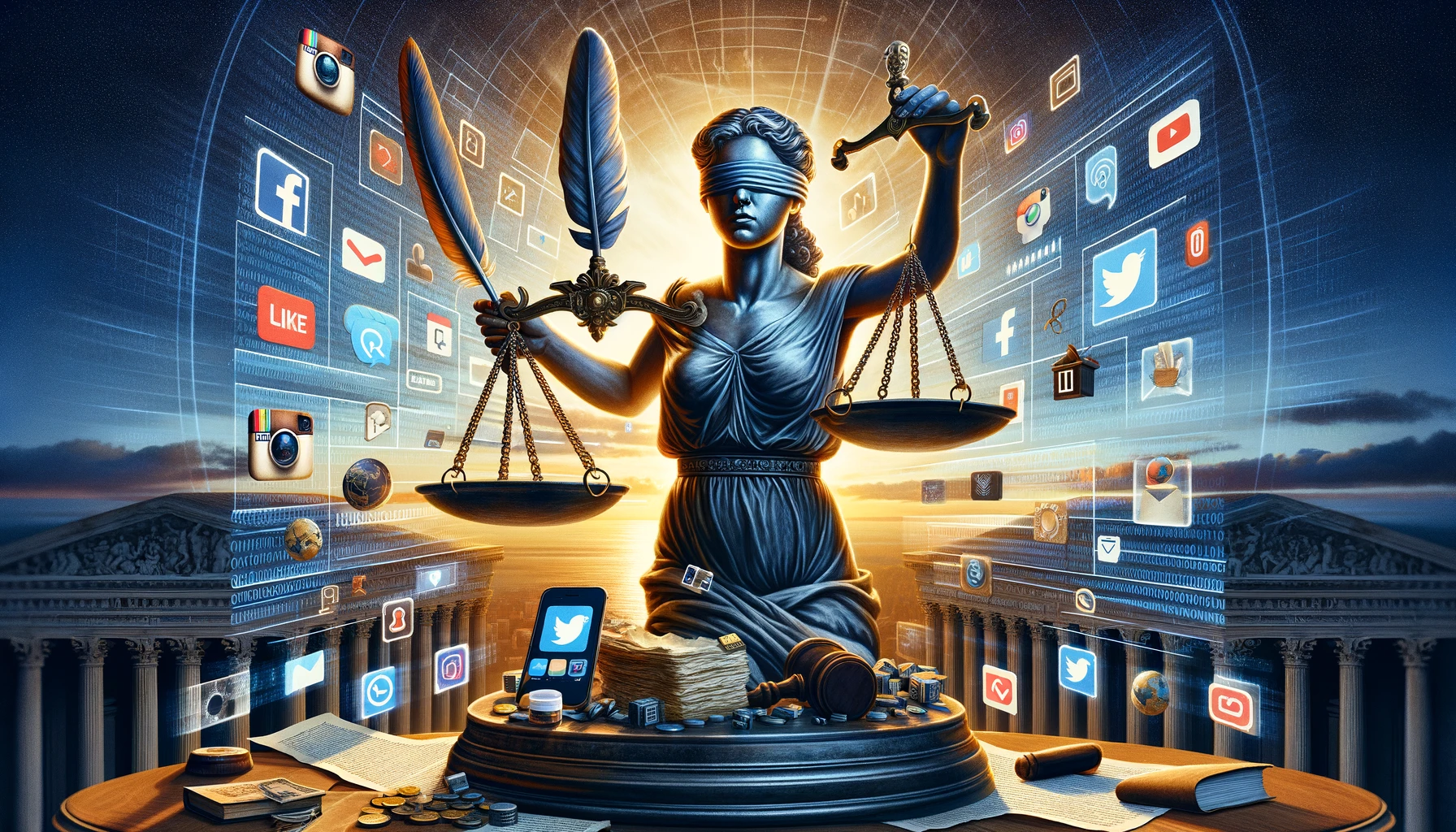The Supreme Court is set to decide on a monumental issue that could reshape the landscape of the internet as we know it. At the heart of the matter is a crucial question: Should social media platforms like Facebook, YouTube, TikTok, and X be treated more like newspapers, shopping centers, or telephone companies? This question comes as the Court prepares to hear two significant cases on Monday, which are deeply intertwined with First Amendment rights and the freedom of speech online.
These cases stem from laws in Florida and Texas, which aim to prevent social media platforms from censoring posts based on their viewpoints, particularly protecting conservative speech. This situation has sparked a heated debate on whether these tech giants have the right to make editorial decisions, a right traditionally held by media outlets like newspapers.
Justice Samuel A. Alito Jr. expressed the challenge the Court faces, acknowledging that existing legal precedents do not easily apply to the digital realm of social media companies. The analogy the Court chooses could set a precedent, determining if these platforms can curate content like a newspaper, must allow all speech like a shopping center, or are required to transmit all messages like a phone company.
The implications of this decision cannot be overstated. Scott Wilkens from the Knight First Amendment Institute at Columbia University highlighted the cases’ significance, suggesting they could dramatically alter the rules of engagement for free speech online. Yet, the debate is complex, with supporters of the laws arguing they promote a diversity of viewpoints, while opponents fear such mandates would infringe on the platforms’ own speech rights and lead to an increase in harmful content.
Governors Ron DeSantis of Florida and Greg Abbott of Texas have championed these laws as protectors of conservative voices, accusing big tech companies of biased censorship. In contrast, the tech industry argues that, like traditional media, they have the right to decide what content to publish or remove, a principle fundamental to the First Amendment.
Lower courts have issued conflicting decisions on these laws, highlighting the legal ambiguity surrounding social media regulation. This has only added urgency to the Supreme Court’s review, with both sides presenting starkly different visions of what freedom of speech should look like in the digital age.
Interestingly, some liberal professors, including Lawrence Lessig, Tim Wu, and Zephyr Teachout, have voiced support for the Texas law, despite acknowledging its potential to amplify hateful speech. They argue against treating social media platforms as news outlets, suggesting they more closely resemble public forums like shopping centers or railroads, thus warranting different regulatory considerations.
The cases, Moody v. NetChoice and NetChoice v. Paxton, have garnered widespread attention, with many seeing them as pivotal in defining the balance between free speech and the right to moderate content on the internet. As the Supreme Court deliberates, the outcome will likely set a landmark precedent, influencing not only the future of social media but also the broader discourse on freedom of expression in the digital age.
This article is based on the following article:

Background Information
Understanding these concepts will help the reader grasp the complexities of the Supreme Court’s upcoming decision and its potential impact on the digital landscape and the broader conversation about free speech in the internet era.
1. First Amendment
The First Amendment to the United States Constitution is a part of the Bill of Rights and protects several fundamental rights, including freedom of speech, freedom of the press, the right to assemble, and the right to petition the government. It prohibits Congress from making laws that restrict these freedoms. The First Amendment is a cornerstone of American democracy, ensuring that citizens can express their opinions, criticize the government, and receive information from diverse sources without fear of censorship.
2. Social Media Platforms
Social media platforms like Facebook, YouTube, TikTok, and X (formerly known as Twitter) are websites or applications that enable users to create and share content or participate in social networking. These platforms have transformed how people communicate, access information, and express themselves. They have become vital public spaces where individuals can voice their opinions, engage in discussions, and disseminate information.
3. Editorial Judgment
Editorial judgment refers to the decision-making process involved in choosing what content to publish, remove, or prioritize. Traditional media outlets, such as newspapers and TV stations, use editorial judgment to decide which stories to cover and how to present them. The debate around social media platforms involves whether they should have the same right to exercise editorial judgment over the content they host, or if they should be treated differently due to their role as public forums.
4. Conservative Speech and Big Tech
The term “conservative speech” generally refers to viewpoints associated with conservative political ideologies. In recent years, there has been a growing debate about whether social media companies disproportionately censor conservative viewpoints, a claim made by some politicians and commentators. This debate has led to calls for regulations to prevent what they perceive as biased censorship by these platforms.
5. Legal Precedents and Analogies
Legal precedents are past court decisions that provide a rule or example for resolving future cases. In deciding how the First Amendment applies to social media, the Supreme Court may look to precedents related to newspapers, shopping centers, and phone companies to find analogies. However, these analogies may not perfectly fit because social media platforms have unique characteristics that distinguish them from these traditional entities.
– Newspapers: Generally have broad rights to decide what to publish due to freedom of the press.
– Shopping Centers: Private property that is open to the public, where the rights to free speech can be more limited.
– Phone Companies: Considered utilities that must provide service to everyone without discrimination.
Please subscribe to Insight Fortnight, our biweekly newsletter!
